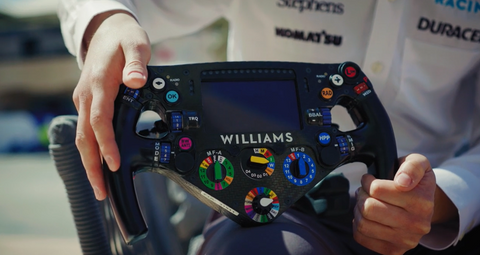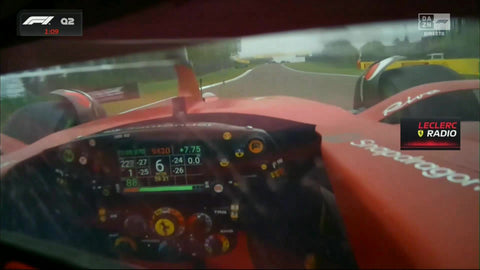Seit 2015 verwendet das Team ein Lenkrad, bei dem das Armaturenbrett nicht am Lenkrad selbst, sondern am Chassis montiert ist. Diese Designentscheidung wurde von mehreren Faktoren beeinflusst, darunter den Vorlieben des Fahrers und dem Wunsch, das Gewicht des Lenkrads zu reduzieren. Mit der Weiterentwicklung des Fahrzeugdesigns und den veränderten Anforderungen der Fahrer ist Williams jedoch zu einem neuen Design übergegangen, bei dem das Armaturenbrett direkt in das Lenkrad integriert ist.

Diese Änderung ist kostspielig, daher dauerte es einige Zeit, die Herstellungsprozesse sowie die für den zuverlässigen Betrieb des Bildschirms erforderliche Elektronik und Software umzustellen. Wenn das Lenkrad während eines Rennens in einem modernen F1-Auto versagt oder das Display dunkel wird, bedeutet dies praktisch das Ende des Rennens – weit entfernt von der F1 der 90er und 2000er Jahre. Man muss nicht lange suchen, um mehrere solcher Ausfälle zu finden – zum Beispiel bei Max Verstappens Redbull beim Großen Preis von Türkei 2021.
Während des gesamten Designprozesses arbeiteten zahlreiche Personen aus verschiedenen Abteilungen des Unternehmens zusammen, darunter Designer, Elektronikingenieure, Systemingenieure, Streckeningenieure und die Fahrer selbst, um eine maßgeschneiderte Lösung zu entwickeln, die auf die Bedürfnisse beider Fahrer für die aktuelle Saison zugeschnitten ist.
Dieses neue Design stellt sicher, dass das Armaturenbrett auch bei hoher Geschwindigkeit jederzeit für den Fahrer sichtbar bleibt und er so schnell auf die Schaltereinstellungen zugreifen kann. Das ergonomische Lenkradlayout mit strategisch platzierten Tasten ermöglicht dem Fahrer einen mühelosen Zugriff auf die Bedienelemente per Daumenbewegung. Drehregler und Schalter am Lenkrad ermöglichen die Anpassung verschiedener Fahrzeugeinstellungen im laufenden Betrieb und verbessern so die Leistung Kurve für Kurve und Runde für Runde.
Darüber hinaus verfügt die Rückseite des Lenkrads über wichtige Komponenten wie Startwippen und Schalter für spezielle Kurveneinstellungen, um den individuellen Vorlieben des Fahrers gerecht zu werden. Jeder Fahrer erhält ein individuelles Lenkrad mit einzigartigen Tastenkonfigurationen und auf seine Vorlieben zugeschnittenen LED-Leuchten, die optimalen Komfort und Funktionalität gewährleisten.
Die Keilform sieht zwar nicht so ansprechend aus wie die meisten anderen F1-Lenkräder, doch die Logik ist klar: weniger Material, weniger Gewicht und mehr Platz für die Fahrer. Oft wird übersehen, wie eng der Platz für die Hände des Fahrers tatsächlich ist – es gibt sogar winzige Aussparungen in der Cockpit-Abdeckung, damit die Hände herausrutschen können, wenn das Lenkrad mehr als nur ein paar Grad gedreht wird.

Ein wichtiger Aspekt des Designprozesses war die Sicherstellung eines komfortablen Griffs für den Fahrer, der durch maßgeschneiderte Griffformen erreicht wurde. Dies war auch ein entscheidender Faktor für uns, geformte Griffe für unser F1L Series 2-Lenkrad zu verwenden. Griffe aus Leder und Alcantara sehen zwar wunderbar aus und fühlen sich auch so an, aber die Komplexität der Griffform macht eine falten- und nahtfreie Bespannung mit solchen Materialien schlicht unmöglich.

Insgesamt wurde ein erheblicher Aufwand in die Entwicklung dieses neuen Rades investiert, und selbst als eines der kleineren Teams dürfen der Aufwand und die Finanzen für ein solches Team nicht unterschätzt werden. Wir freuen uns daher darauf, Williams Racing im Einsatz auf der Strecke zu sehen und 2024 im Mittelfeld aufzusteigen.


